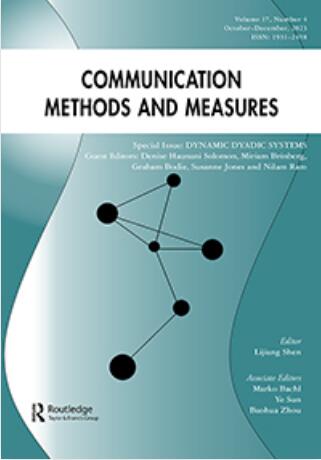父母-青少年情感互动中的转折与会话动机分析
IF 3.7
1区 文学
Q1 COMMUNICATION
引用次数: 1
摘要
本文章由计算机程序翻译,如有差异,请以英文原文为准。
An Analysis of Turn Transitions and Conversational Motifs in Parent-Adolescent Emotion-Focused Interactions
ABSTRACT Informed by the dynamic dyadic systems perspective on analyzing conversational data, this study uses sequence analysis to illuminate turn patterns that characterize parents’ emotion coaching/dismissing communication and adolescents’ emotion regulation/dysregulation in conversations about an emotionally evocative event. This study analyzed two conversations from 60 parent-adolescent dyads, 30 with harmful parental alcohol use and 30 without, where the adolescent described recent events that elicited positive and negative feelings. Using configural frequency analysis, we identified turn sequences that were over- and under-represented in the data, and we compared the prevalence of different turn sequences between families with harmful and non-harmful alcohol use. Then, using sequence analysis, we identified conversational motifs that reflect different patterns of parental communication and adolescent emotion regulation in conversation. Three conversational motifs emerged in conversations about negative emotions: (a) information sharing, (b) emotion regulating, and (c) reactive. Conversations about positive emotions revealed two conversational motifs: (a) emotion regulating and (b) information sharing. In addition, the conversational motifs were examined as predictors of adolescents’ post- interaction appraisals of their own emotion regulation and their parent’s responsiveness and control during the conversation. Findings point to the utility of sequence analysis for documenting patterns of interaction in parent-adolescent emotion-focused conversations.
求助全文
通过发布文献求助,成功后即可免费获取论文全文。
去求助
来源期刊

Communication Methods and Measures
COMMUNICATION-
CiteScore
21.10
自引率
1.80%
发文量
9
期刊介绍:
Communication Methods and Measures aims to achieve several goals in the field of communication research. Firstly, it aims to bring attention to and showcase developments in both qualitative and quantitative research methodologies to communication scholars. This journal serves as a platform for researchers across the field to discuss and disseminate methodological tools and approaches.
Additionally, Communication Methods and Measures seeks to improve research design and analysis practices by offering suggestions for improvement. It aims to introduce new methods of measurement that are valuable to communication scientists or enhance existing methods. The journal encourages submissions that focus on methods for enhancing research design and theory testing, employing both quantitative and qualitative approaches.
Furthermore, the journal is open to articles devoted to exploring the epistemological aspects relevant to communication research methodologies. It welcomes well-written manuscripts that demonstrate the use of methods and articles that highlight the advantages of lesser-known or newer methods over those traditionally used in communication.
In summary, Communication Methods and Measures strives to advance the field of communication research by showcasing and discussing innovative methodologies, improving research practices, and introducing new measurement methods.
 求助内容:
求助内容: 应助结果提醒方式:
应助结果提醒方式:


